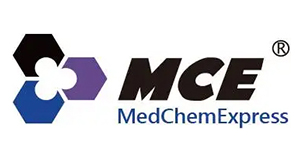Fatostatin, CAS 125256-00-0
Fatostatin, CAS 125256-00-0
SKU
MEXHY-14452-10.1
Packaging Unit
10 mM/1 ml
Manufacturer
MedChemExpress
Availability:
loading...
Price is loading...
Product Description: Fatostatin (125B11), a specific inhibitor of SREBP activation, impairs the activation of SREBP-1 and SREBP-2. Fatostatin binds to SCAP (SREBP cleavage-activating protein), and inhibits the ER-Golgi translocation of SREBPs. Fatostatin decreases the transcription of lipogenic genes in cells. Fatostatin possesses antitumor properties, and lowers hyperglycemia in ob/ob mice[1][2].
Applications: Cancer-programmed cell death
Formula: C18H18N2S
References: [1]Li X et al. Fatostatin displays high antitumor activity in prostate cancer by blocking SREBP-regulated metabolic pathways and androgen receptor signaling. Mol Cancer Ther. 2014 Apr;13(4):855-66./[2]Shao W et al. Fatostatin blocks ER exit of SCAP but inhibits cell growth in a SCAP-independent manner. J Lipid Res. 2016 Aug;57(8):1564-73./[3]Inoue K et al. Fatostatin, an SREBP inhibitor, prevented RANKL-induced bone loss by suppression of osteoclast differentiation. Biochim Biophys Acta. 2015 Nov;1852(11):2432-41./[4]Choi Y, et al. Identification of bioactive molecules by adipogenesis profiling of organic compounds. J Biol Chem. 2003 Feb 28;278(9):7320-4./[5]Kamisuki S, et al. A small molecule that blocks fat synthesis by inhibiting the activation of SREBP. Chem Biol. 2009 Aug 28;16(8):882-92.
CAS Number: 125256-00-0
Molecular Weight: 294.41
Compound Purity: 99.96
Research Area: Cancer
Solubility: DMSO : ≥ 27 mg/mL
Target: Fatty Acid Synthase (FASN)
Applications: Cancer-programmed cell death
Formula: C18H18N2S
References: [1]Li X et al. Fatostatin displays high antitumor activity in prostate cancer by blocking SREBP-regulated metabolic pathways and androgen receptor signaling. Mol Cancer Ther. 2014 Apr;13(4):855-66./[2]Shao W et al. Fatostatin blocks ER exit of SCAP but inhibits cell growth in a SCAP-independent manner. J Lipid Res. 2016 Aug;57(8):1564-73./[3]Inoue K et al. Fatostatin, an SREBP inhibitor, prevented RANKL-induced bone loss by suppression of osteoclast differentiation. Biochim Biophys Acta. 2015 Nov;1852(11):2432-41./[4]Choi Y, et al. Identification of bioactive molecules by adipogenesis profiling of organic compounds. J Biol Chem. 2003 Feb 28;278(9):7320-4./[5]Kamisuki S, et al. A small molecule that blocks fat synthesis by inhibiting the activation of SREBP. Chem Biol. 2009 Aug 28;16(8):882-92.
CAS Number: 125256-00-0
Molecular Weight: 294.41
Compound Purity: 99.96
Research Area: Cancer
Solubility: DMSO : ≥ 27 mg/mL
Target: Fatty Acid Synthase (FASN)

 Deutsch
Deutsch










